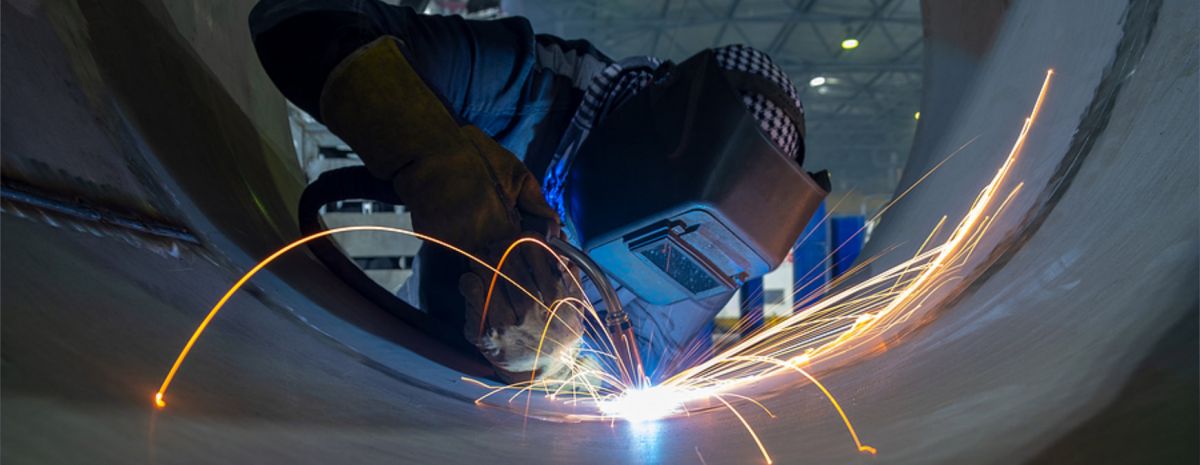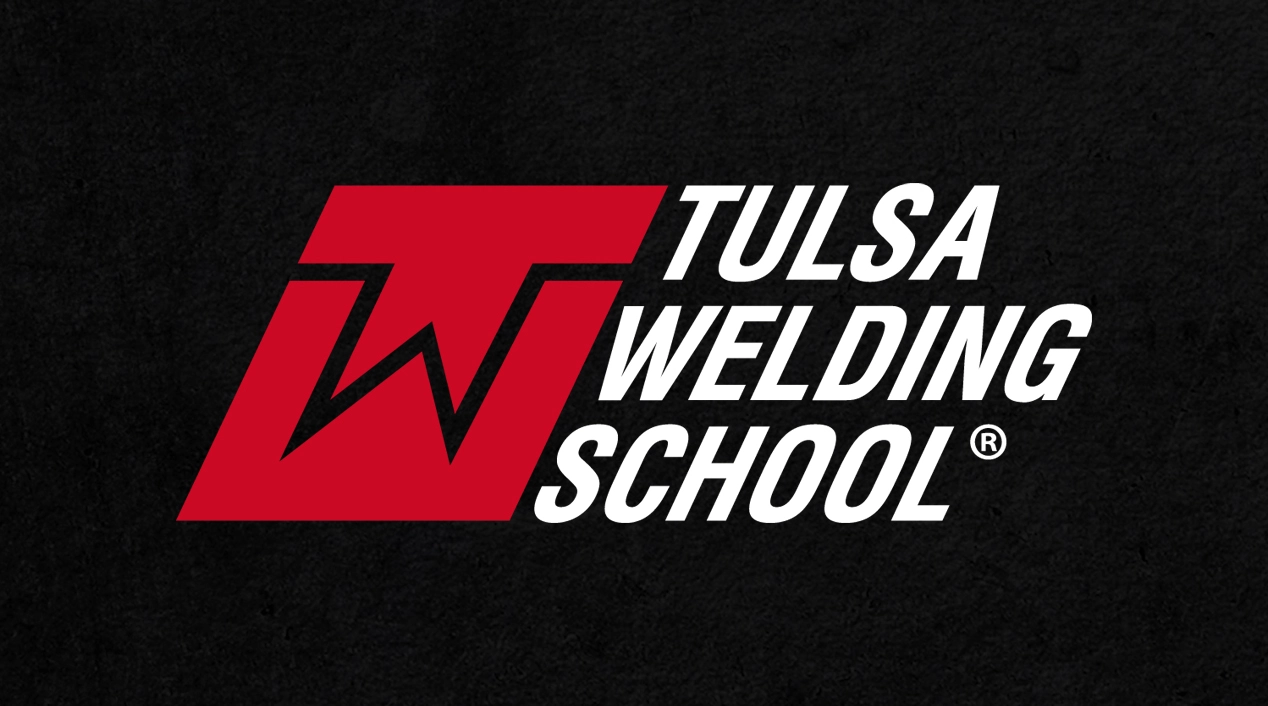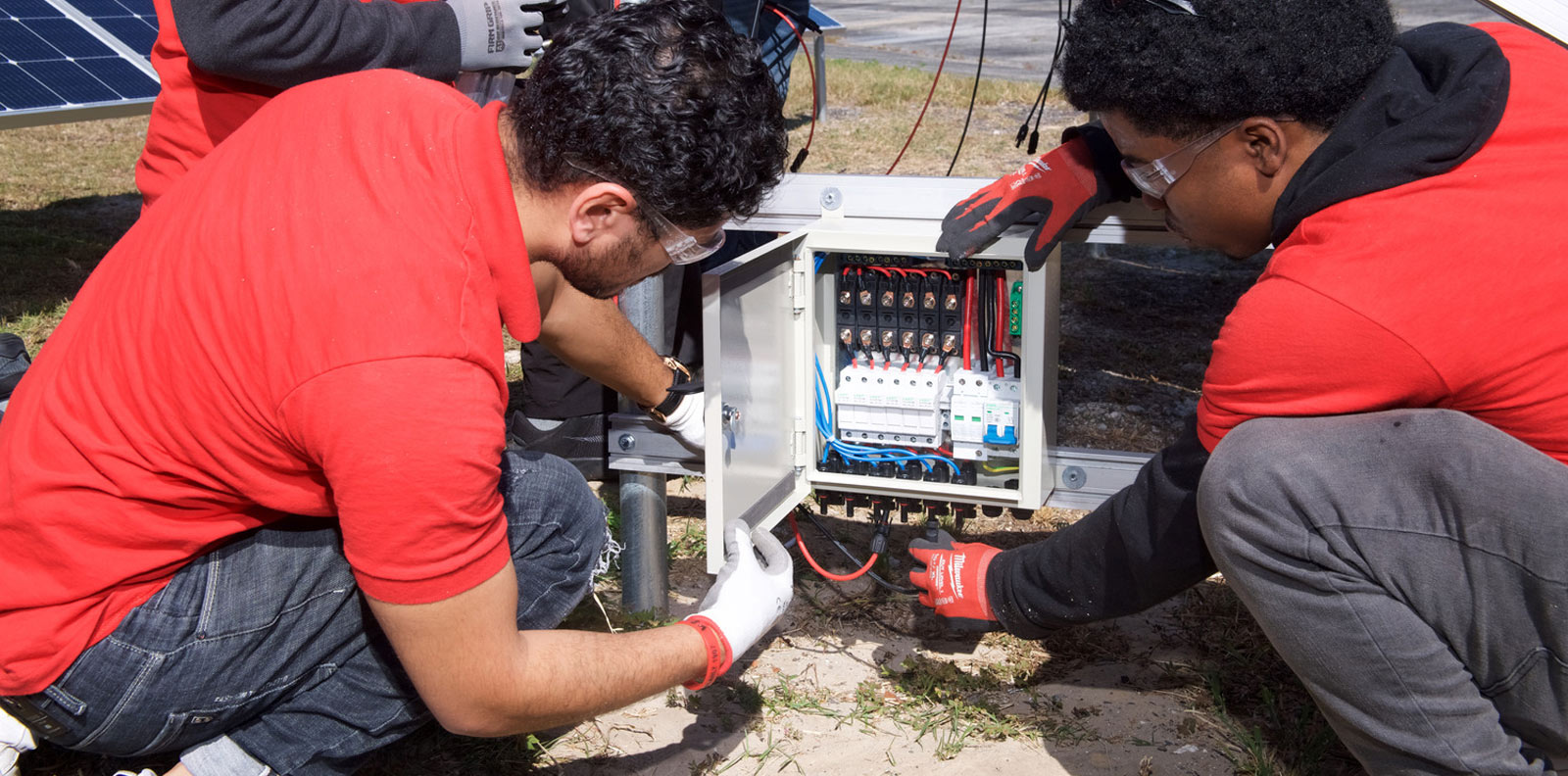TWS is a Great Training Option for Everyone
Learn more about how we can prepare you to advance your career.
As a pipefitter, you’ll use various types of tools throughout your career, including measuring tools, cutting tools, and precision tools. We’ve put together the following list of must-have pipefitter tools you’ll want to get familiar with.
General pipefitter tools
1. Welder’s Gauge
A welders’ gauge is used for quality control. Using this tool, a pipefitter can check for issues at the source of the pipe, such as angle of preparation, alignment, fillet weld throat and fillet weld length.1
A welders’ gauge can be used before a pipe fitting job to determine the pipe material, quality of the pipe and dimensions. This tool can also be used to double-check alignment after a fitting job is complete.2 The gauge is extremely important because any small error could cause leakages or other issues.1
2. Pipefitter’s Square
A pipefitter’s square is a tool used to make sure a pipe is aligned properly and that its angles are accurate. The two most common angles for a pipe to be bent are either 45 or 90 degrees, but a pipefitter’s square can also be used to fit pipes at uncommon angles.2
Have You Considered a Career in the Skilled Trades?
Fill out the form to recieve a no obligation info packet.
3. Fitter Grips
Fitter grips are used to lock two pipes together while they are being welded. This tool can also be used to lock a pipe in place as it is being welded to a joint.2 Fitter grips are important to a pipefitter’s daily work because they allow a pipefitter to work hands-free as the pipe is being securely held in place.3
4. Centering Head
A centering head is a pipefitter’s tool used to establish angles or points on pipes, which are cylindrical surfaces. It is often used to find centerlines on a pipe, such as top dead center or bottom dead center, but it can also be used to find other angles. This tool is extremely important for precision marking.4,5
5. Pipe Wraps
Pipe wraps help a pipefitter make a straight cut on a pipe. This wrap is placed around the pipe to make sure that all the edges are aligned before cutting. Then a pipefitter will draw a line around the pipe with a sharp piece of soapstone, following the wrap to ensure a precise cut.1
6. Flange Aligners
Flange aligners help pipefitters align joints before welding. This tool can also be used during routine maintenance to check for joint misalignment.1 Flange aligners can be attached at the point of misalignment, then used to pull the flanges back into correct alignment.6
Measuring tools pipefitters use
There are eight common types of tools that pipefitters use to measure and mark the dimensions of pipes before installing, cutting, and assembling.
1. Steel Rule
One of the simplest but most essential tools in any pipefitter’s toolkit is the steel rule, otherwise known as a ruler. This steel rule is a measuring tool that helps a pipefitter make accurate measurements using predefined markings, like inches and centimeters. A steel rule can be rigid or flexible, and can be used as a guide for laying out lines. A very rigid steel rule could even be used as a guide for cutting.
2. Circumference Rule (aka Tinners Rule)
A circumference rule, also known as a tinners rule, has a regular measuring scale on the top edge like a steel rule, with the added functionality of circumference measurements on the bottom edge. The top edge can be used to measure the diameter of a pipe, while the bottom can be used to determine the circumference. A circumference rule is especially useful for fabricating around ducts, ducting, pipes and tubes.
3. Straight Edge
A straight edge differs from a ruler because it has no marking for measurement. Instead, a straight edge is a long wooden or metallic instrument with a perfectly flat edge, used to check the straightness of lines or to maintain an undeviating linear path.6 Straight edges can come in different materials, sizes, weights and lengths.
4. Scriber
Once a pipefitter measures lines for cutting, they might use what is called a scriber to mark the lines. A scriber is like a pen for metalworkers. It is a hand tool used to mark lines on metal. A scriber is made of a rod with a tip of cast steel that has been hardened and sharpened to a point. A scriber leaves a mark by dragging the point over the metal to create a shallow scratch. A scriber is used rather than a pen or pencil because regular ink lines are too easily erased and hard to see.
5. Scribing Compass (aka Divider)
A scribing compass, also called a divider, helps pipefitters accurately mark and measure, inscribe circles and arcs, and can also be used to measure distances.
6. Trammel
A trammel is a tool used to draw circles and arcs that are larger than can be drawn with a divider or compass. They can also be used to bisect lines and angles.
7. Prick and Center Punch
A punch is a tool with a hard metal rod with a narrow tip at one end and a flat area on the other end. The tip is strategically placed on a surface, and the flat end is hammered down to create a small hole or indentation on the workpiece. A center punch is used to mark the center of a point, which can help guide a drill and prevent it from straying. A prick punch is used for marking out, or creating a dimple, in a piece of metal to guide a pattern or cutting.
Common pipefitter cutting tools
1. Hacksaw
A hacksaw is a fine-toothed saw designed for cutting metal. Hacksaws can be used to cut nearly any size of pipe made out of metal or plastic. This is a versatile pipefitter tool that can be used to cut pipe by simply moving the blade through the metal pipe backwards and forwards.
Hacksaw blades come in different sizes for different types of metal. The unit of measurement for hacksaw blades is teeth per inch (TPI). For example, a lower TPI of 14 can be used for aluminum or softer metals, and a higher TPI of 32 can be used for steel tubing.
There are specific types of hacksaws:
- Panel hacksaws, used for sheet metal
- Junior hacksaws, with a half-size blade
- Power hacksaw, with an electric motor
2. Manual Pipecutter
A pipecutter (sometimes also called a tube cutter) is another type of hand tool pipefitters can use. Pipecutters are known to leave cleaner cuts on the outside of the tube or pipe. However, they may be more limited with the types of pipes they can cut.4
A manual pipecutter generally has one stationary support and one adjustable support that would be mounted. Depending on the design, a pipecutter might have a roller wheel or movable cutting wheel.
The tool works by rotating it around the pipe and tightening it repeatedly until the pipe is cut all the way through.
3. Cutting Torch
Oxy-fuel cutting is a process that uses a fuel gas (such as propane or gasoline) and pure oxygen to cut metals. When the fuels combine, the combustion creates a very hot flame that can be triggered by the pipefitter and applied to the metals at hand.
The cutting torch is the tool that the pipefitter holds and manipulates to make the cut. The torch is connected to regulators and hoses that contain the oxygen source and fuel source. The flame heats the metals enough to allow the pipefitter to cut the metals.
4. Angle Grinder
An angle grinder is a versatile handheld power tool that can be used in a lot of different ways during metal fabrication, including cutting, grinding, finishing and polishing. This tool generally has a rapidly spinning cutting wheel, powered by electricity through a cord or battery.
Angle grinders can come in many different sizes, models and brands. For cutting metal pipes, the type of disc, or wheel, needed will depend on the hardness, thickness and type of metal. For example, a thicker disc would be required to cut cast-iron steel than aluminum.
Precision tools for pipefitters
Many highly specialized tools are available to help pipefitters perform cleaner work. See how these 7 precision tools are used on the job site.
Protractor
A pipefitter protractor looks like the ones you might have used in high school math class to measure angles. The heavy-duty pipefitter protractors used in the field aren’t much different.
They’re primarily used to measure the squareness of a pipe or fitting in relation to another surface, or to set transfer angles and bevels. Many pipefitter protractors are equipped with two blades that can rotate around an axis to achieve the variety of angles necessary for pipefitting work.
Typically, pipefitters can lock these body members in at different angles from 0° to 180°.
Micrometers
Sometimes, pipefitters have to work with incredibly small measurements to optimize precision on their projects. A micrometer is a specialized measuring tool allowing for pinpoint accuracy when measuring small objects.
This precise tool can measure the thickness, length, and depth of pipes, depending on the work a pipefitter is doing. Pipefitters can use micrometers when dealing with tolerances smaller than 0.001-inches. Some micrometers come with handy dial gauges or digital readouts to make it easier for pipefitters to read the precise measurements quickly and accurately.
Centering Head
Whether working in tight spaces or in an area that’s not well lit, pipefitters won’t always have an easy time determining the center of a pipe. The circular shape of pipe faces also makes it difficult to locate center points. That’s where a centering head tool comes in handy.
Centering heads, also known as center finders, make it easy for pipefitters to identify the center of a pipe along with its top line and bottom line. With these markings, it’s easier to make accurate alignments when connecting pipes.
Calculator
Typically, pipefitter training programs cover mathematics so pipefitters enter the field with a good working knowledge of relevant equations, angles, and other important concepts.
When on the job, pipefitters use specialized, scientific calculators for precise and quick calculations. Some pipefitting calculators can determine slopes, angles, arcs, and other important measurements while taking into account the type of piping and material being used.
Wraparounds
The curved nature of pipes makes it incredibly difficult to make precise measurements with standard tools. Wraparounds solve this problem by allowing pipefitters to mark accurate lines around pipes when trying to improve alignments or make precise cuts. These compact tools pack quite a useful punch, making them an easy addition to even the most crammed pipefitter’s tool bag.
Torpedo Level
Another crucial tool for pipefitters is known as a torpedo level. These devices are perfect for tradespeople working in tight spaces because of their compact size.
Torpedo levels have various tubes full of liquid that help pipefitters determine the levelness of piping at different angles. A little bubble within the tubes of liquid centers in between two marks when it’s level. Some torpedo levels even come with magnetic attachments so pipefitters can conveniently attach the tool to a metal pipe no matter the angle for accurate measurements.
Hi-Lo Welding Gauge
When connecting pipes together, pipefitters need to use hi-lo gauges to determine internal alignment. This tool can be used while a pipefitter makes slight adjustments for precise fittings and joinings.
A hi-lo gauge can significantly cut down on time and financial losses resulting from inaccurate work that pipefitters must redo.
Learn More in Pipefitter Training

This is not a complete list of pipefitter tools, but some of the common tools many pipefitters use.
Interested in learning more about pipefitter tools? Pipefitting training can be a good place to get some practice working with these tools. It can also serve as a starting point for preparing for an exciting career as a pipefitter. Contact Tulsa Welding School to learn more about its welding and pipefitting training programs. Call (855) 237-7711.
1https://healthyhandyman.com/essential-pipefitter-tools-list/
2https://www.ehow.com/list_6012197_tools-pipe-fitting.html
3https://pipefitter.com/store/fitter-grips-tool.html#product-details-tab-reviews
4https://pipefitter.com/store/standard-centering-head.html#product-details-tab-specification
5https://www.mathey.com/Pages/tool-centering-head.htm
6https://www.specialisedforce.com.au/product/type/flange-aligner








